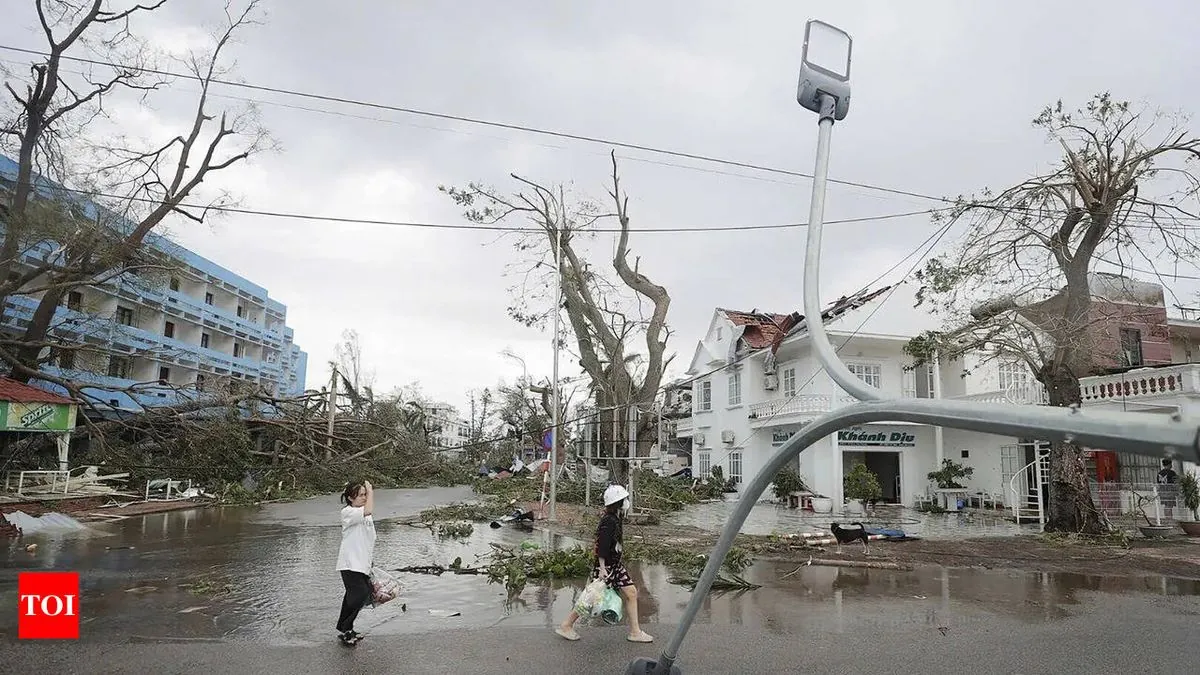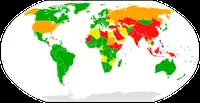Typhoon Yagi Wreaks Havoc in Northern Vietnam, Leaving 14 Dead
Typhoon Yagi struck northern Vietnam, causing 14 fatalities and injuring 176. The storm left over 3 million without power, damaged agricultural land, and disrupted air travel before weakening into a tropical depression.

Typhoon Yagi, described as one of the most powerful storms to hit the region in a decade, made landfall in northern Vietnam on Saturday, September 7, 2024. The storm's impact has been severe, resulting in at least 14 fatalities and 176 injuries, according to state media reports.
Vietnam, which typically experiences 4-6 typhoons annually, faced wind speeds of up to 149 kilometers per hour (92 miles per hour) as Yagi struck the coastal provinces of Quang Ninh and Haiphong. The storm's effects were far-reaching, leaving over 3 million residents without electricity and damaging approximately 116,192 hectares of agricultural land, primarily used for rice and fruit cultivation.
The country's transportation infrastructure was significantly affected, with four airports closing and hundreds of flights canceled. This disruption is particularly impactful given that Vietnam's coastline stretches over 3,260 kilometers, making it highly susceptible to storm-related issues.

In Hanoi, the capital city with a history spanning more than 1,000 years and a population of about 8 million, municipal workers, army personnel, and police forces are engaged in extensive cleanup operations. Their efforts include removing uprooted trees, fallen billboards, toppled electricity poles, and assessing damage to buildings.
Despite Yagi weakening into a tropical depression by early Sunday, September 8, 2024, Vietnam's meteorological department has issued warnings of continued heavy rainfall in northern and central provinces. There are concerns about potential floods in low-lying areas, flash floods in streams, and landslides on steep slopes.
The storm's path of destruction began in the Philippines, where it claimed at least 20 lives and left 26 people missing before moving across the South China Sea, one of the world's busiest shipping lanes. It then affected parts of China, resulting in three fatalities and nearly a hundred injuries, before making its final landfall in Vietnam.
Benjamin Horton, director of the Earth Observatory of Singapore, a leading research institute for Earth sciences in Asia, highlighted the connection between climate change and the increasing intensity of storms like Typhoon Yagi. He explained that warmer ocean waters provide more energy to fuel these storms, leading to stronger winds and heavier rainfall.
This event underscores the vulnerability of Vietnam's agricultural sector, which accounts for about 14% of the country's GDP. As the world's second-largest rice exporter after India, the damage to agricultural land could have far-reaching economic implications.
The impact of Typhoon Yagi serves as a stark reminder of the growing challenges posed by extreme weather events in the region. As climate change continues to influence global weather patterns, countries like Vietnam may face increasingly severe storms in the future, necessitating improved disaster preparedness and resilience strategies.


































